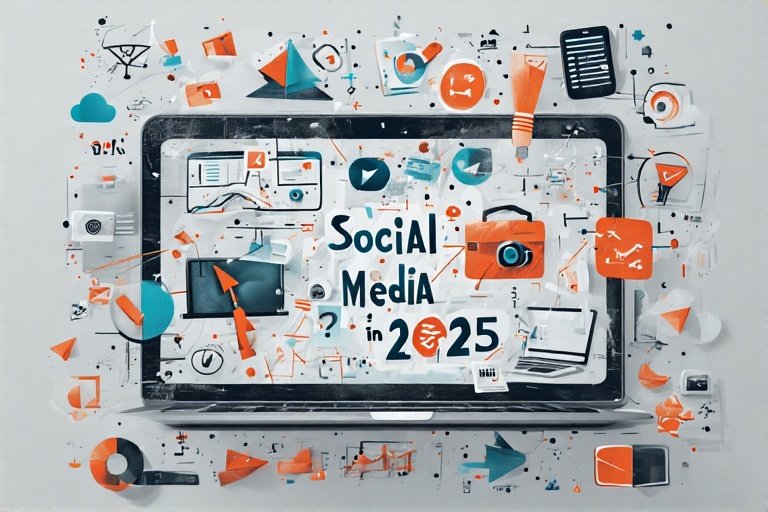
The digital marketing landscape is constantly evolving, and social media advertising in 2025 is shaping up to be one of the most critical components of any growth-oriented strategy. With users spending more time than ever on platforms like TikTok, Instagram, YouTube Shorts, and emerging social commerce apps, marketers are rethinking how they connect with their audiences in a privacy-conscious and content-first world.
Agencies like ShapiroPR are helping brands bridge the gap between traditional PR and next-generation digital engagement by integrating reputation-building with performance-driven advertising strategies.
This article dives into the trends, tools, and best practices defining the future of social media advertising in 2025—and how your brand can thrive in this dynamic space.
1. Short-Form Video Is King
In 2025, short-form video continues to dominate digital feeds. Platforms prioritize 15-60 second videos that deliver value instantly—whether it’s entertainment, education, or product discovery. Brands that master this format are seeing higher engagement rates, better retention, and greater ROI.
Successful examples include:
-
Product demos in Instagram Reels
-
User-generated TikTok reviews
-
YouTube Shorts for service tips
These formats align with Gen Z and Millennial preferences for “snackable” content that feels authentic and shareable.
To better understand how brand storytelling enhances this format, learn more about the role of narrative in digital communication.
2. AI-Powered Targeting and Creative Automation
Artificial intelligence is now central to campaign success. Ad platforms use machine learning to:
-
Identify high-value audience segments
-
Generate and test multiple ad variants automatically
-
Predict content fatigue and rotate creatives accordingly
-
Optimize bids in real-time for better ROAS (Return on Ad Spend)
This automation allows marketers to shift from manual A/B testing to strategic oversight. With tools like Meta Advantage+ and Google Performance Max, advertisers can run dozens of creative permutations simultaneously—maximizing effectiveness at scale.
3. Micro-Influencers and UGC Dominate Engagement
In 2025, user-generated content (UGC) and micro-influencer partnerships outperform celebrity endorsements and high-budget commercials.
Why? Because audiences crave authenticity.
A beauty brand, for example, might send products to 50 micro-influencers with under 20K followers. These creators produce honest, personal reviews that build trust and drive conversions—especially when used in paid ads as native content.
This creator-driven approach also enables more efficient budget allocation. For every $1 spent on UGC-style influencer content, brands are seeing an average return of $6–$12 in direct conversions.
Want to understand how this ties into broader communication strategy? Read more about the evolving role of PR in digital-first branding.
4. Social Commerce Integration Streamlines the Funnel
Social media platforms are no longer just for discovery—they’re for direct purchases. In 2025, platforms like TikTok Shop, Instagram Checkout, and Pinterest Shopping allow users to explore, add to cart, and pay—all without leaving the app.
This evolution has shortened the buyer journey significantly. Brands are leveraging:
-
Live shopping events
-
Shoppable video ads
-
In-feed product tagging
-
Instant coupon pop-ups in Stories
Even B2B brands are experimenting with social commerce for whitepapers, consultations, and tool subscriptions.
For examples of how storytelling drives conversions in noisy spaces, check out this resource.
5. Privacy-First Advertising and Ethical Data Use
As privacy regulations evolve and consumers become more conscious of how their data is used, advertisers in 2025 must embrace privacy-first practices.
Key shifts include:
-
Moving from third-party to first-party and zero-party data
-
Emphasizing consent-based personalization
-
Using contextual targeting rather than behavioral tracking
-
Clearly communicating how data is collected and used
Brands that adopt transparent data strategies are seeing improved trust scores, better user engagement, and fewer opt-outs.
To explore how businesses are future-proofing their strategies in turbulent times, read more.
6. Advanced Ad Formats: From AR to Conversational Commerce
In 2025, ad formats are becoming more immersive and interactive. Brands are experimenting with:
-
Augmented Reality (AR) try-ons
-
360° video tours
-
Poll stickers in ads
-
Chatbot-enabled Story ads
These formats don’t just grab attention—they engage users in experiences, increasing dwell time and improving conversion rates.
Example: A home décor brand uses Instagram AR filters to let users “place” a lamp in their space. They then retarget with dynamic ads featuring similar styles the user interacted with.
7. Strategic Cross-Platform Storytelling
Successful advertisers are no longer platform-dependent. Instead, they create unified brand stories that span TikTok, Instagram, LinkedIn, YouTube, and emerging platforms like BeReal or Threads.
Each platform plays a unique role:
-
TikTok: Discovery through trending challenges
-
Instagram: Conversion and product showcasing
-
LinkedIn: Thought leadership and B2B targeting
-
YouTube Shorts: Evergreen educational content
Consistency in brand voice, visual identity, and CTA across platforms builds stronger recall and loyalty.
For more storytelling tips in crowded markets, check out this resource.
8. Real-World Example: Sustainable Fashion Brand Goes Viral
Brand: An eco-conscious apparel startup
Platform Strategy:
-
Partnered with 25 sustainable lifestyle creators on TikTok
-
Created short-form “day in the life” videos featuring the brand
-
Used shoppable links via TikTok Shop
-
Retargeted viewers with carousel ads on Instagram
Results after 21 days:
-
7.8 million organic views
-
3.6x ROAS
-
28% email list growth
-
4,200 new first-time buyers
This strategy worked because it blended UGC, creator trust, social commerce, and cross-channel consistency.
Best Practices for Social Media Advertising in 2025
✔ Embrace short-form, mobile-first content
✔ Use AI for targeting and creative automation
✔ Partner with micro-influencers for authentic reach
✔ Adopt privacy-first and transparent data practices
✔ Integrate social commerce into campaigns
✔ Optimize in real-time with machine learning tools
✔ Maintain cohesive storytelling across platforms
Conclusion: The Human-Centric Future of Social Media Ads
As we navigate 2025, social media advertising is becoming more human, intelligent, and immersive. The brands that will thrive are those that embrace:
-
Smart use of data
-
Creative storytelling
-
Tech-driven experimentation
-
Ethical engagement
With the right tools, strategies, and mindset, marketers can turn every scroll, swipe, and tap into a meaningful brand interaction.

